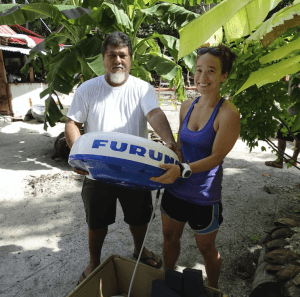Palau President Tommy E. Remengesau Jr. said it all recently in the Guardian: “Today is a historic day for Palau, proving that a small island nation can have a big impact on the ocean.”
Similarly, OneReef now has the opportunity to show big impact, as it expands opportunities under new partnerships with Palau.
The Palau National Marine Sanctuary (PNMS) will protect 80% of Palau’s territorial waters, underlining the need for effective surveillance, protected area financing, and supporting policies – all areas in which OneReef has committed to help Palau under our current relationship. The PNMS will increase demand and scope for what OneReef’s model provides.
As an example, we see an opportunity to expand use at OneReef sites of a new radar system – the Marine Monitor (M2) – developed by Protected Seas. The new tech application could provide a key element in coastal surveillance that will enable Palau to enforce their new sanctuary.
Using existing low-cost radar units, Protected Seas has pioneered a new tool that will provide affordable yet powerful eyes in the sky for community-based conservation officers. The system is easy to use, mechanically robust, and deployable anywhere. Thanks to software designed by the Anthropocene Institute, the system can stream vessel track data via satellite to cloud storage, where it can be organized and interpreted to indicate how well an MPA is being protected. The radar also al

lows users to define protected zones and set alarms to alert conservation officers that vessel activity may be illegal or unsanctioned.
The system was successfully demonstrated at the Moss Landing Marine Labs in 2015. Working with Protected Seas staff, OneReef will install the first field unit in Palau and FSM.
The Anthropocene Institute will continue to refine the software, examine the value of using increasingly more powerful radar units, and test the viability of networking radar units and increasing functionality until the system is virtually autonomous.
The system may also contribute scientifically. Vessel traffic data are a key indicator of overall human impact on reefs. With these data we can better control for human impact when we assess reef ecological health. In particular, we can tease out fishing vs. climate related change effects; thus, these data could contribute to our understanding of the long run climate change stress response of coral reefs – which is critical to adaptive management. Support our efforts and help prevent enforcement.